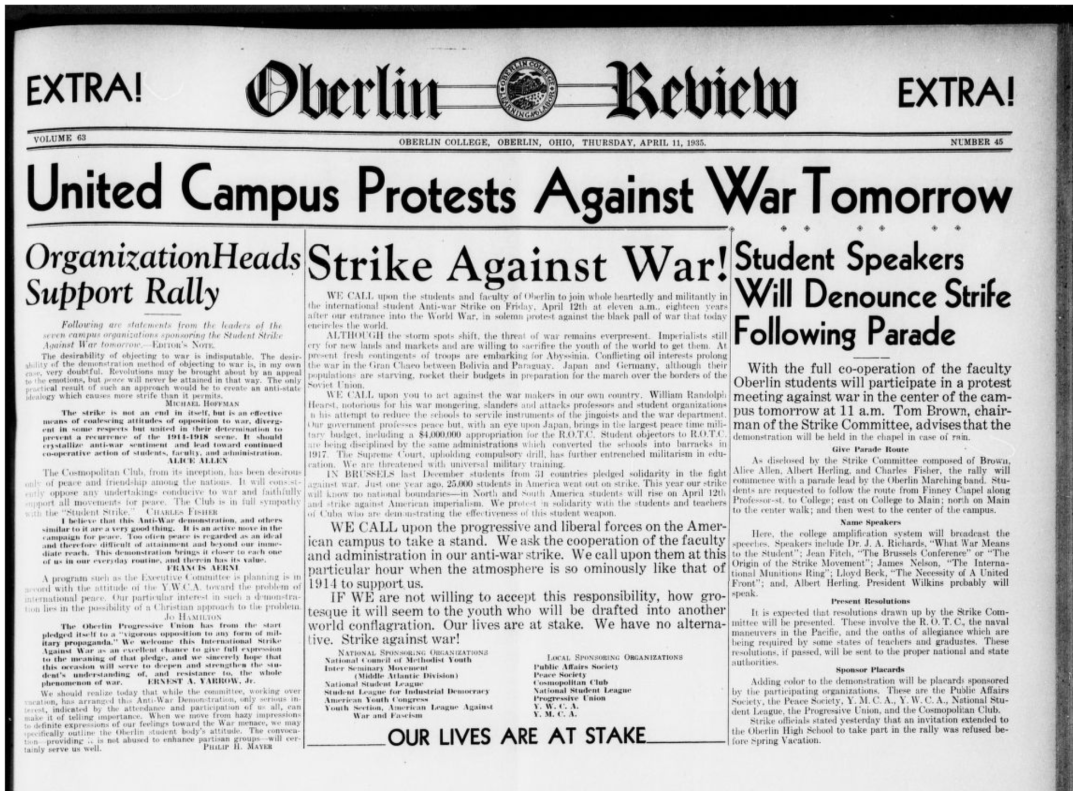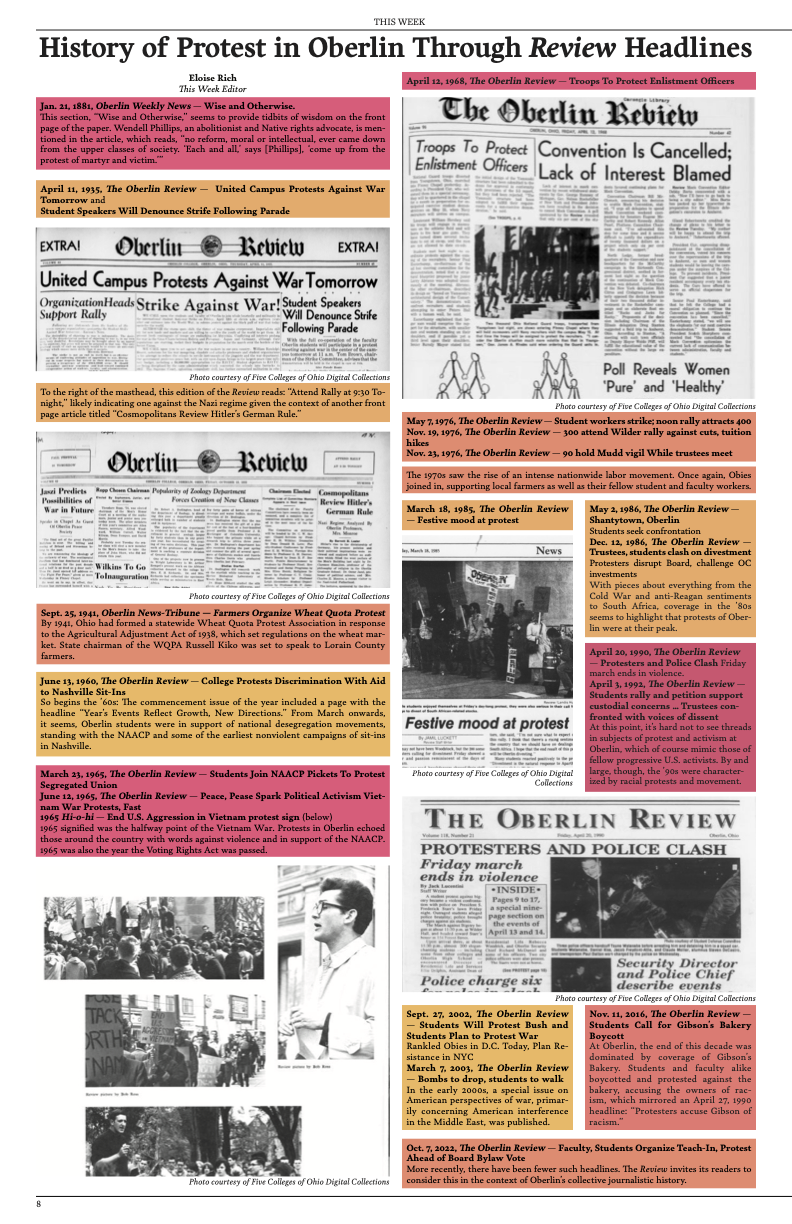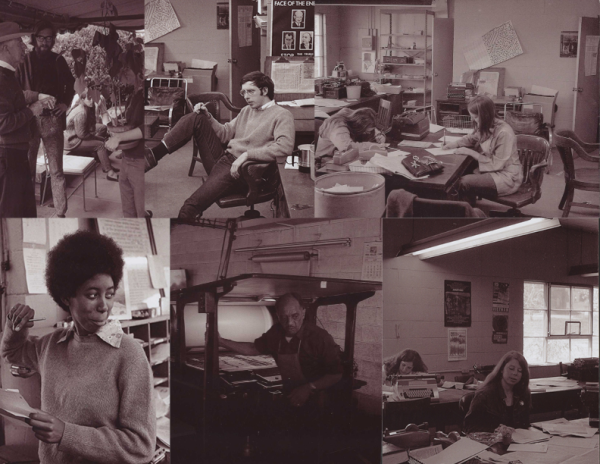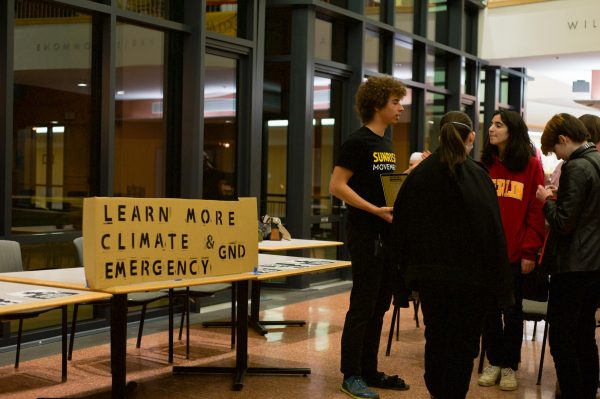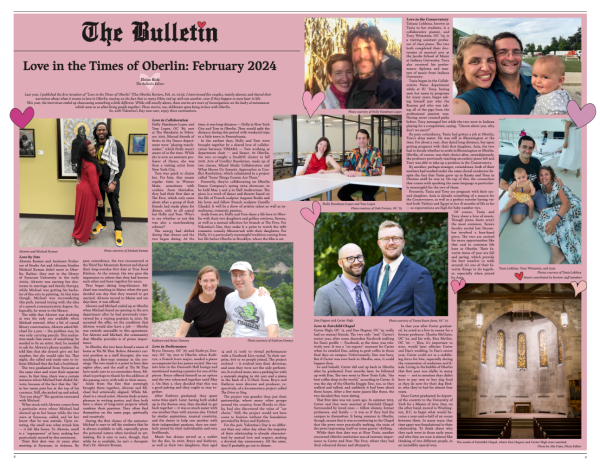History of Protest in Oberlin Through Review Headlines
Jan. 21, 1881, Oberlin Weekly News — Wise and Otherwise.
This section, “Wise and Otherwise,” seems to provide tidbits of wisdom on the front page of the paper. Wendell Phillips, an abolitionist and Native rights advocate, is mentioned in the article, which reads, “no reform, moral or intellectual, ever came down from the upper classes of society. ‘Each and all,’ says [Phillips], ‘come up from the protest of martyr and victim.’”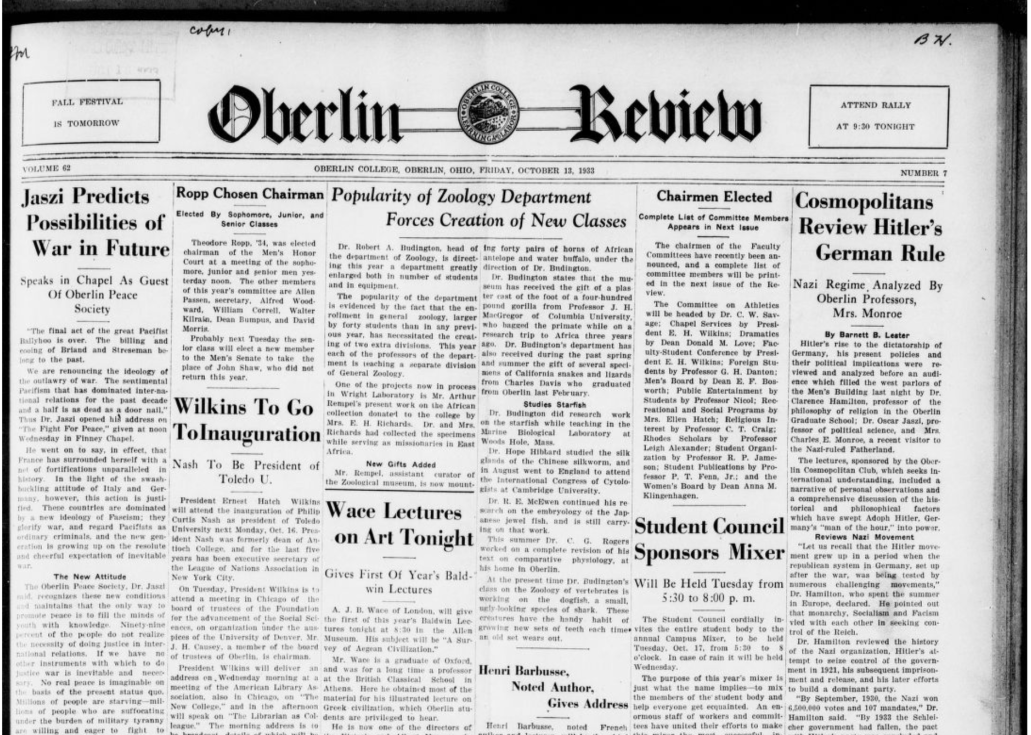
To the right of the masthead, this 1933 edition of the Review reads: “Attend Rally at 9:30 Tonight,” likely indicating one against the Nazi regime given the context of another front page article titled “Cosmopolitans Review Hitler’s German Rule.”
April 11, 1935, The Oberlin Review — United Campus Protests Against War Tomorrow and Student Speakers Will Denounce Strife Following Parade
Sept. 25, 1941, Oberlin News-Tribune — Farmers Organize Wheat Quota Protest
By 1941, Ohio had formed a statewide Wheat Quota Protest Association in response to the Agricultural Adjustment Act of 1938, which set regulations on the wheat market. State chairman of the WQPA Russell Kiko was set to speak to Lorain County farmers.
March 23, 1965, The Oberlin Review — Students Join NAACP Pickets To Protest Segregated Union
June 12, 1965, The Oberlin Review — Peace, Pease Spark Political Activism Vietnam War Protests, Fast
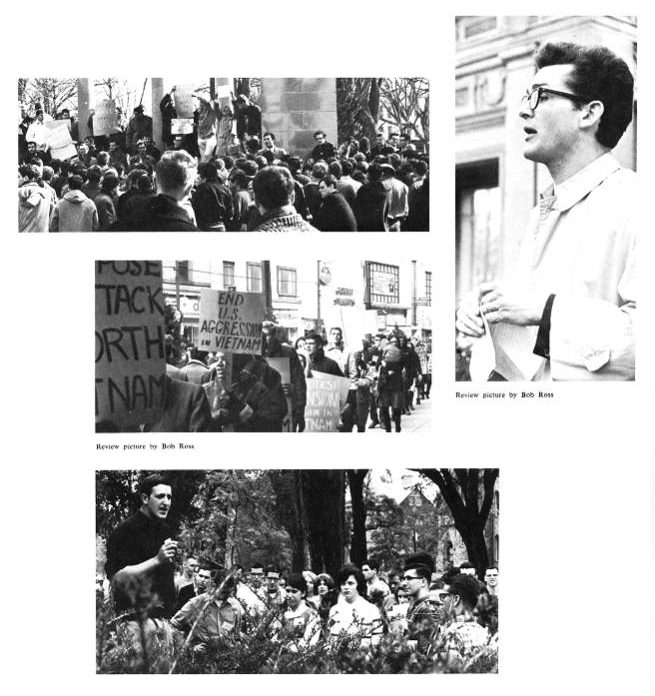 1965 Hi-o-hi — End U.S. Aggression in Vietnam protest sign
1965 Hi-o-hi — End U.S. Aggression in Vietnam protest sign
1965 signified was the halfway point of the Vietnam War. Protests in Oberlin echoed those around the country with words against violence and in support of the NAACP. 1965 was also the year the Voting Rights Act was passed.
April 12, 1968, The Oberlin Review — Troops To Protect Enlistment Officers
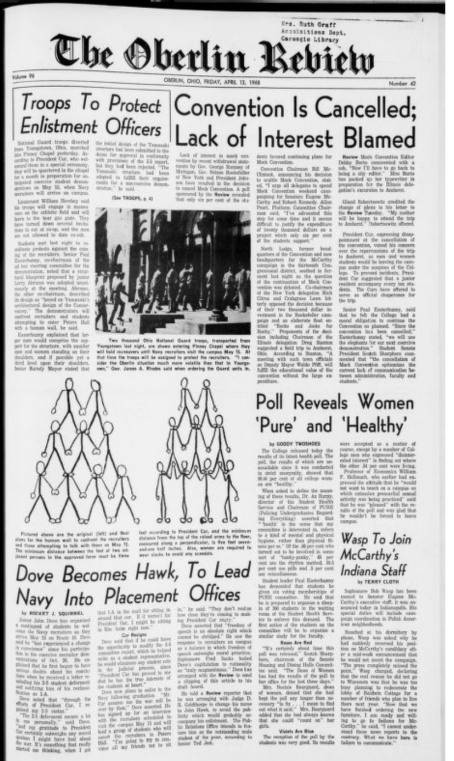 May 7, 1976, The Oberlin Review — Student workers strike; noon rally attracts 400
May 7, 1976, The Oberlin Review — Student workers strike; noon rally attracts 400
Nov. 19, 1976, The Oberlin Review — 300 attend Wilder rally against cuts, tuition hikes
Nov. 23, 1976, The Oberlin Review — 90 hold Mudd vigil While trustees meet
The 1970s saw the rise of an intense nationwide labor movement. Once again, Obies
joined in, supporting local farmers as well as their fellow student and faculty workers.
March 18, 1985, The Oberlin Review — Festive mood at protest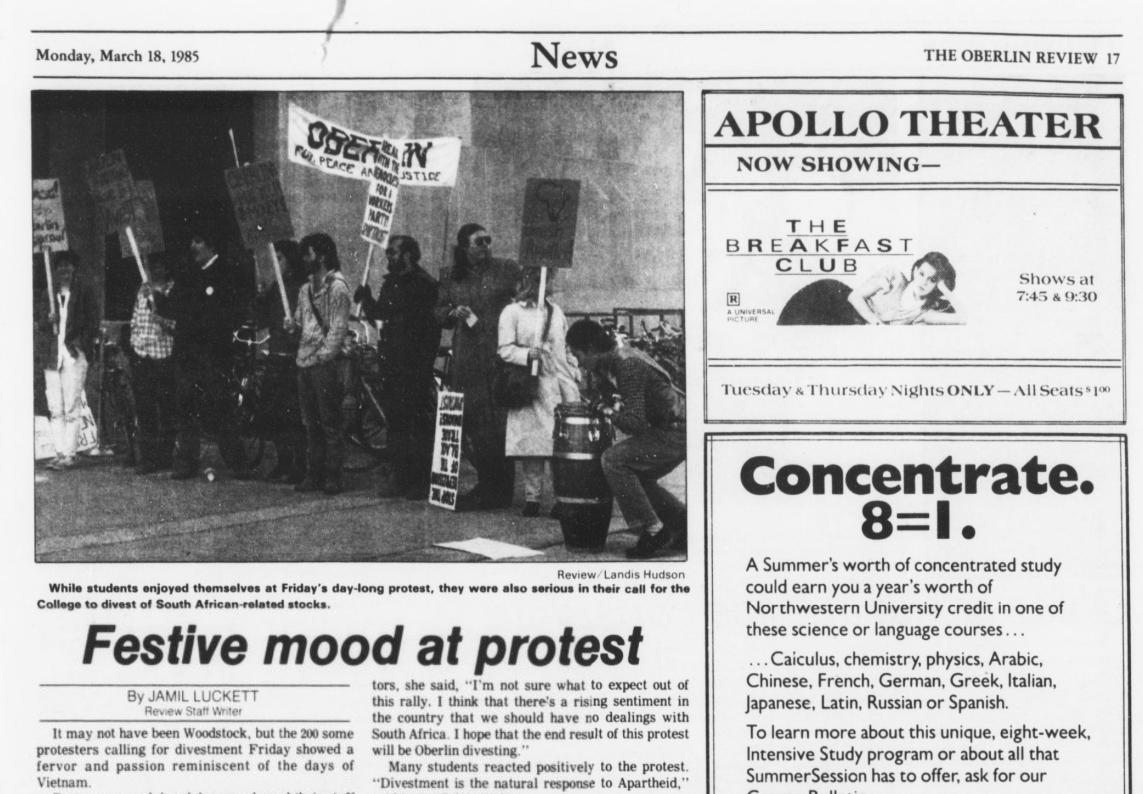
May 2, 1986, The Oberlin Review — Shantytown, Oberlin Students seek confrontation
Dec. 12, 1986, The Oberlin Review — Trustees, students clash on divestment Protesters disrupt Board, challenge OC investments
With pieces about everything from the Cold War and anti-Reagan sentiments
to South Africa, coverage in the ’80s seems to highlight that protests of Oberlin were at their peak.
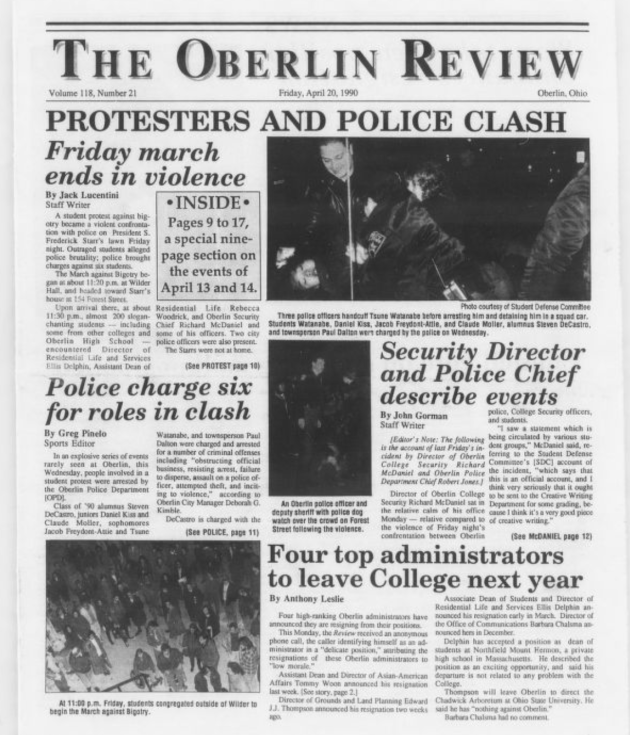 April 20, 1990, The Oberlin Review — Protesters and Police Clash Friday march ends in violence.
April 20, 1990, The Oberlin Review — Protesters and Police Clash Friday march ends in violence.
April 3, 1992, The Oberlin Review — Students rally and petition support custodial concerns … Trustees confronted with voices of dissent
At this point, it’s hard not to see threads in subjects of protest and activism at Oberlin, which of course mimic those of fellow progressive U.S. activists. By and large, though, the ’90s were characterized by racial protests and movement.
Sept. 27, 2002, The Oberlin Review — Students Will Protest Bush and
Students Plan to Protest War Rankled Obies in D.C. Today, Plan Resistance in NYC
March 7, 2003, The Oberlin Review — Bombs to drop, students to walk
In the early 2000s, a special issue on American perspectives of war, primarily concerning American interference in the Middle East, was published.
Nov. 11, 2016, The Oberlin Review — Students Call for Gibson’s Bakery Boycott
At Oberlin, the end of this decade was dominated by coverage of Gibson’s Bakery. Students and faculty alike boycotted and protested against the bakery, accusing the owners of racism, which mirrored an April 27, 1990 headline: “Protesters accuse Gibson of racism.”
Oct. 7, 2022, The Oberlin Review — Faculty, Students Organize Teach-In, Protest Ahead of Board Bylaw Vote
More recently, there have been fewer such headlines. The Review invites its readers to consider this in the context of Oberlin’s collective journalistic history.


